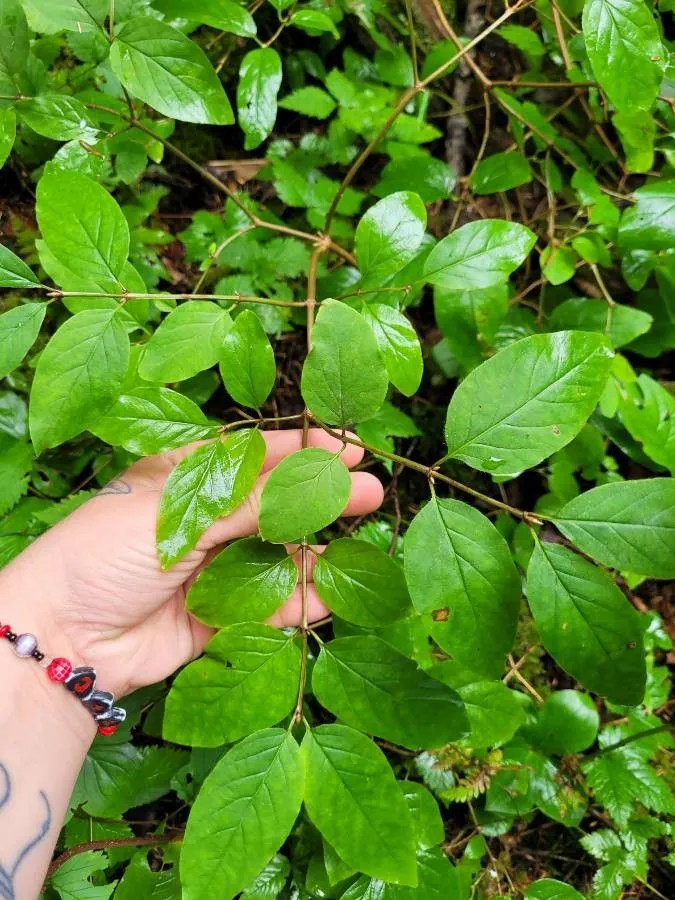
Author: J.Bartram & W.Bartram ex Marshall
Bibliography: Arbust. Amer.: 81 (1785)
Year: 1785
Status: accepted
Rank: species
Genus: Lonicera
Vegetable: False
Observations: E. Canada to NC. & E. U.S.A.
American fly honeysuckle, scientifically known as Lonicera canadensis, is an intriguing and aesthetically pleasing shrub native to North America. First described in 1785 by John Bartram and William Bartram, with further elaboration by Humphry Marshall in “Arbust. Amer.,” this plant has since captured the attention of botanists and gardeners alike.
Belonging to the Caprifoliaceae family, American fly honeysuckle is primarily found in the eastern regions of Canada and the United States, extending from East Canada to North Carolina. This distribution highlights its adaptability to various climatic conditions and its ability to thrive in both cooler and temperate zones.
The shrub is characterized by its delicate, tubular flowers that often exhibit shades of yellow or greenish-white. These blossoms emerge in early spring and are known to attract a myriad of pollinators, including bees and butterflies, making it a valuable addition to garden ecosystems designed to promote biodiversity.
The plant’s foliage consists of ovate leaves, usually 3–7 cm long, which are arranged oppositely along the stems. In the fall, these leaves often transition to a subtle shade of yellow, adding a touch of color to the autumn landscape. The berries produced by the plant are another noteworthy feature; these small, red or orange fruits are not only visually appealing but also serve as a food source for various bird species.
In terms of habitat, Lonicera canadensis is typically found in forested areas, favoring moist, well-drained soils. It often grows under the canopy of larger trees, making it an excellent understory plant for shaded garden areas. Its moderate size, usually reaching heights of 1-2 meters, also makes it suitable for residential gardens where space might be limited.
Despite its attractiveness, American fly honeysuckle is relatively low-maintenance, requiring minimal pruning and care once established. This makes it a practical choice for gardeners seeking to incorporate native plants that enhance local biodiversity while also being easy to manage.
In summary, Lonicera canadensis, or American fly honeysuckle, is a captivating shrub that offers both ecological benefits and aesthetic appeal. Its native presence across East Canada and the Eastern United States underscores its resilience and versatility, making it a worthy subject of study and admiration for both botanists and garden enthusiasts.
Eng: american fly honeysuckle, canadian fly honeysuckle, fly honeysuckle, canada fly-honeysuckle, american fly-honeysuckle
Fra: chèvrefeuille du canada
En: American fly honeysuckle, American Fly-Honeysuckle, Canadian fly honeysuckle, Fly honeysuckle, Canada fly-honeysuckle
Ar: عسلة كندية
Bg: Канадски орлови нокти
Fi: Kanadankuusama
Fr: Chèvrefeuille du Canada
Fa: لنیکرا کانادایی
Ru: Жимолость канадская
Taken Apr 16, 2022 by Dayton Ulrich (cc-by-sa)
Taken Aug 26, 2021 by Carolanne Rochon (cc-by-sa)
Taken Apr 9, 2022 by Cecilia Grimmer (cc-by-sa)
Taken Jun 17, 2022 by Emmanuelle Desroches-Jacques (cc-by-sa)
© copyright of the Board of Trustees of the Royal Botanic Gardens, Kew.
© copyright of the Board of Trustees of the Royal Botanic Gardens, Kew.
© copyright of the Board of Trustees of the Royal Botanic Gardens, Kew.
Growth habit>: Shrub
Family: Myrtaceae Author: (F.Muell.) K.D.Hill & L.A.S.Johnson Bibliography: Telopea 6: 402 (1995) Year: 1995 Status:…
Family: Rubiaceae Author: Pierre ex A.Froehner Bibliography: Notizbl. Bot. Gart. Berlin-Dahlem 1: 237 (1897) Year:…
Family: Sapindaceae Author: Koidz. Bibliography: J. Coll. Sci. Imp. Univ. Tokyo 32(1): 38 (1911) Year:…
Family: Asteraceae Author: A.Gray Bibliography: Pacif. Railr. Rep.: 107 (1857) Year: 1857 Status: accepted Rank:…
Family: Fabaceae Author: Medik. Bibliography: Vorles. Churpfälz. Phys.-Ökon. Ges. 2: 398 (1787) Year: 1787 Status:…
Family: Aspleniaceae Author: (Cav.) Alston Bibliography: Bull. Misc. Inform. Kew 1932: 309 (1932) Year: 1932…